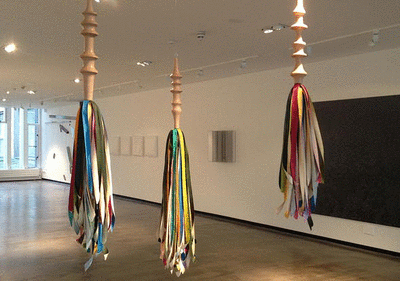Goodfellow, Paul (2014) A Machine Aesthetic. [Show/Exhibition]
![[img]](/21523/1.hassmallThumbnailVersion/machine_aesthetics.jpg)
|
Image (JPEG) (Gallery view of exhibition, at Gallery North, Northumbria University. Untitled, Three Part System Sculpture, 2013 )
machine_aesthetics.jpg - Other Download (31kB) | Preview |
Abstract
A Machine Aesthetic is a curated national touring exhibition which took place at Gallery North, Newcastle; The Gallery@AUB, Bournemouth, ProjectSpacePlus, Lincoln, The Gallery@NUA, Norwich and Transition Gallery, London, curated by Eric Butcher and Simón Granell. The show featured work from Paul Goodfellow, Andrew Bracey, Eric Butcher, David Connearn, Robert Currie,Simón Granell, Emma Hart, Dan Hays, Natasha Kidd, Tim Knowles, and Michael Roberts
'From the first daubings of pre-historic caves, through the invention of the camera obscura and ready-made oil paint in tubes, to the use of digital media, artists have been among the first to embrace and exploit new technologies. The focus of A Machine Aesthetic, however, is at once narrower and broader, concerning itself specifically with the notion and implications of ‘mechanisation’ in its widest sense in contemporary art.
Since the late 1950/early 60s there have evolved a plethora of artistic practices which, for reasons as various as the practitioners themselves, involve the manufacture of machines to produce the artistic ‘product’. Where Jean Tinguely led the way, artists as diverse as Rebecca Horn, Chris Burden, Roxy Paine and Damien Hirst followed. But these analyses have tended to conceive of the machine in a narrow sense. And while this conception has its part to play in A Machine Aesthetic, a more illuminating perspective can be achieved by consideration of the full range of artistic practices that embrace more subtle and sophisticated notions of mechanisation.
Contemporary fine art practice engages with the notion of mechanisation in a sophisticated range of ways; from artists who exploit the materials, processes and techniques of machine production, incorporating machined materials into their work, to those who do not engage physically with machines at all, but adopt a mechanised methodology in the process of manufacture, disciplining their minds and bodies to behave like machines. The latter approach recognises and exploits the extent to which the human condition is predicated upon mechanisation, but acknowledges that we are only part machine. Artists make machines to make their work for them, the creative act being pushed one or more steps from the actual moment of production, raising fundamental questions concerning the status and primacy of the creative act and the relationship between it and the art object. In some cases the ‘art machine’ is the art object.
In addition, the notion of mechanisation may refer to the process of the reception of the art object by the viewer. The demands that some works of art make on the viewer in their apprehension can be formidable. The manner of a work’s execution may demand an analogously mechanistic process in its apprehension.
A Machine Aesthetic: The role of mechanisation in contemporary artistic practice, divided into four parts (Machined Components, Behaving like Machines, Mechanised Processes, Art Machines), attempts to explore the various manifestations, uses and influences of different aspects of mechanisation within the practice of a diverse range of contemporary artists'.
Text: Eric Butcher & Simón Granell
| Item Type: | Show/Exhibition |
|---|---|
| Subjects: | W100 Fine Art |
| Department: | Faculties > Arts, Design and Social Sciences > Design |
| Depositing User: | Paul Goodfellow |
| Date Deposited: | 04 Mar 2015 10:07 |
| Last Modified: | 24 Oct 2017 08:17 |
| URI: | http://nrl.northumbria.ac.uk/id/eprint/21523 |
Downloads
Downloads per month over past year







